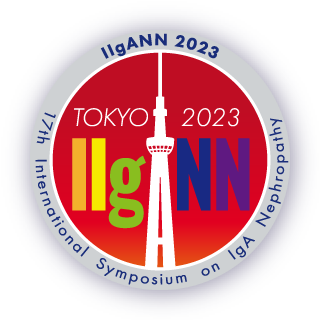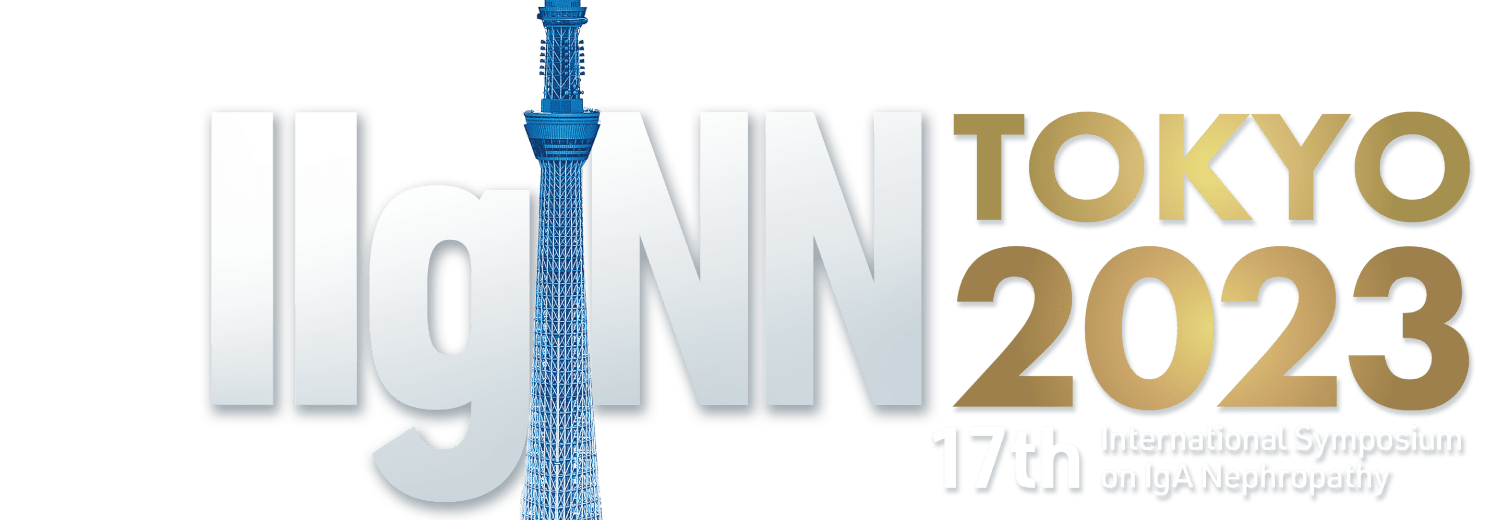| 7:30-8:30 |
Industry Symposium 3 - STADA AG/Calliditas NA Enterprises Inc.
Venue: 3F KFC Hall
Evolving landscape in IgAN – Treating IgAN in 2023 and Beyond
- Moderator
- Yusuke Suzuki
Redefining Standards for IgAN Treatment in a Rapidly Evolving Landscape
- Speaker
- Jonathan Barratt
IgAN Treatment: a clinical update
- Speaker
- Richard Lafayette
Symposium Overview
|
| 7:30-8:30 |
Industry Symposium 4 - Mitsubishi Tanabe Pharma Corporation
Venue: 2F KFC hall 2nd
How should we treat anemia in CKD patients to maximize their well-being?
- Chair
- Kunihiro Yamagata
- Speaker
- Takehiko Wada
Symposium Overview:
Anemia in chronic kidney disease (CKD) patients is known to be associated with a high burden of morbidity and adverse clinical outcomes. While the role of anemia in patient outcomes specific to IgA nephropathy, as the primary disease, has yet to be established, several studies have suggested its association with worse outcomes. On the other hand, there is currently no consensus on the optimal degree of anemia improvement or the appropriate treatment approach.
This presentation aims to share the current knowledge on the significance of anemia and to discuss optimal therapeutic approaches to maximize the well-being of CKD patients.
|
| 13:00-14:00 |
Industry Symposium 5 - Otsuka America Pharmaceutical and Otsuka Pharmaceutical Co., Ltd. Japan
Venue: 3F KFC Hall
Understanding the Role of APRIL in the Pathogenesis of IgA Nephropathy
- Moderator
- Yusuke Suzuki
- Speaker
- Dana Rizk, Yoshihito Nihei
Symposium Objectives:
- Review background on IgA Nephropathy
and the four-hit IgA Nephropathy pathogenesis
- Discuss B-cell biology and review for APRIL physiologic roles
- Review scientific evidence that supports the role of APRIL in IgA Nephropathy pathogenesis
|
| 13:00-14:00 |
Industry Symposium 6 - Travere Therapeutics
Venue: 2F KFC hall 2nd
Global Diversity and Controversies in IgA Nephropathy: A Conversation with Experts
- Moderator
- Jonathan Barratt
- Speaker
- Heather N. Reich, Hernán Trimarchi, Suceena Alexander
Symposium Overview
|
| 17:00-18:00 |
Industry Symposium 7 - AstraZeneca K.K.
Venue: 2F KFC hall 2nd
SGLT2: Old yet New
- Chair
- Ichiei Narita
- Speaker
- Eisei Sohara
Symposium Overview:
SGLT (Sodium Glucose co-transporter) is a transporter for glucose reabsorption in the renal proximal tubules. It has been considered to be important for energy retention in the body, and SGLT mutations were found to cause “Renal Glucosuria”. After a period of decades, SGLT2 inhibitors have recently gained attention for their therapeutic application in the treatment of CKD. In this seminar, I would like to give an overview of this old and new SGLT2 and its inhibitors from the viewpoints of genetics, physiology, and clinical nephrology.
|

